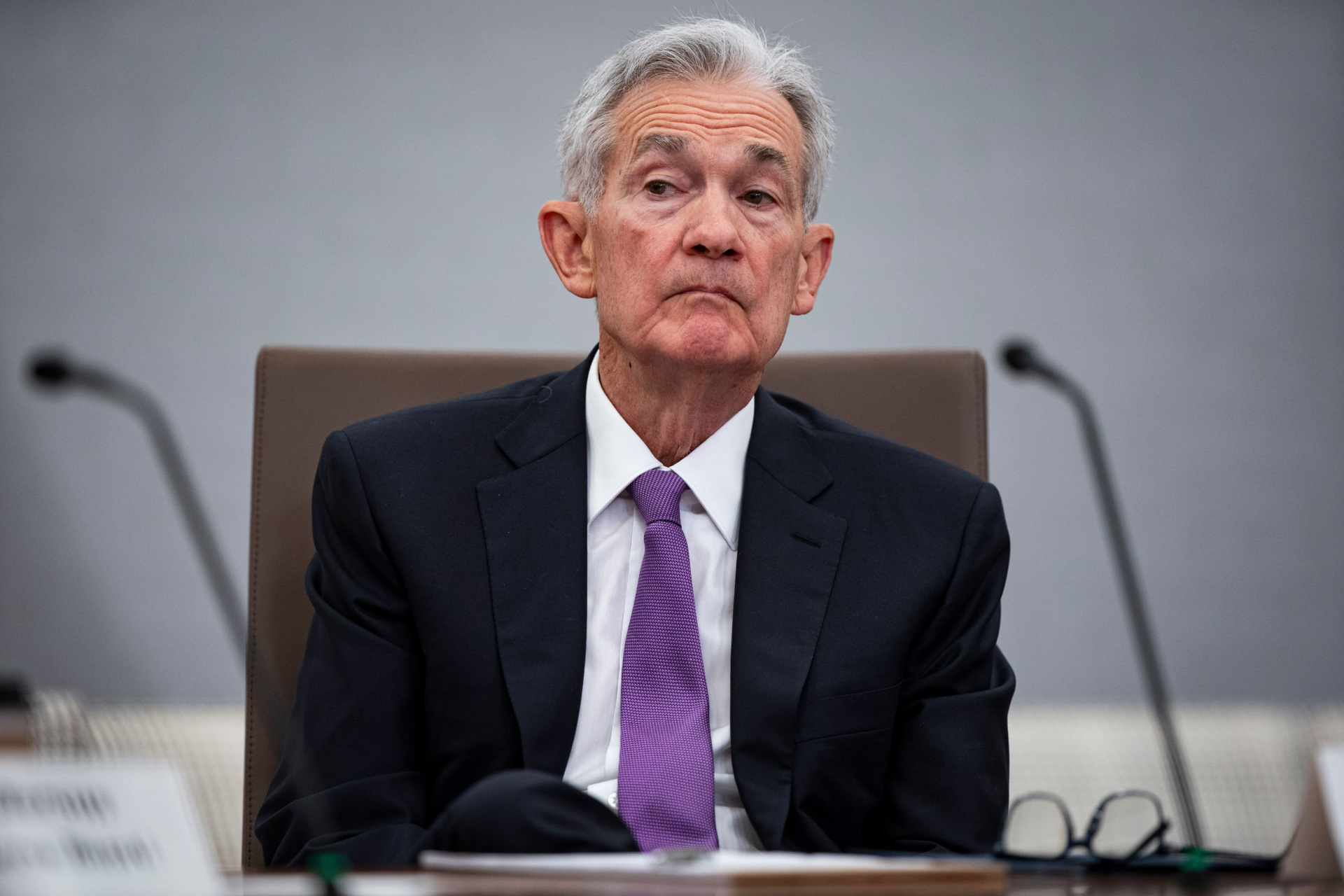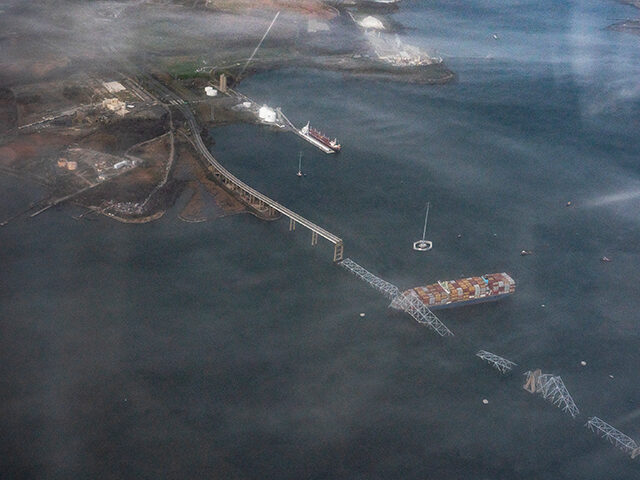Powell Says That the Fed Isn’t Getting Closer to Cutting Rates
Prices continued to rise at an uncomfortably fast pace in February—fast enough to keep any rate cuts from the Federal Reserve on hold.
The Department of Commerce reported a monthly gain of 0.3 percent in February’s personal consumption expenditure (PCE) price index. That annualizes to a 4.1 percent gain, far higher than the two percent the Fed targets.
A few months ago, many Democrat-leaning pundits and economists were pointing to the three-month annualized figure for PCE prices as indicating that inflation had been defeated and that the Fed could safely start cutting rates. Back in September, for example, New York Times columnist Paul Krugman tweeted “Still no recession, but core PCE down to 2.2% on a three-month basis. Team Long Transitory for the win.”
That has not aged well. The most recent three-month annualized headline PCE inflation rate is 3.4 percent. Three-month core inflation is running at 3.5 percent. Which is to say, the trend is no longer for inflation quickly returning to the Fed’s target but for inflation getting stuck between three and four percent.
Federal Reserve Chair Jerome Powell said the February PCE data was “pretty much in line with expectations.” This was a funny way of putting it because Powell appeared to leak the Fed’s expectations at last week’s press conference. So, the market’s expectations were shaped, in part, by Powell telling us in advance where PCE appeared to be headed.
Powell also indicated that the February inflation figures have not given the Fed any additional reassurance that inflation is coming down to two percent sustainably.
Kai Ryssdal, the host of American Public Radio’s Marketplace program, directly asked Powell if the February data could be considered “good” enough to add to the case for cutting rates. Powell declined to say “yes.” Instead, he said that inflation data had been good last year and was bad in January. February’s data was better than the previous month but not as good as last year.

Federal Reserve Chairman Jerome Powell attends a Fed Listens event in Washington, DC, on March 22, 2024. (Al Drago/Bloomberg via Getty Images)
“February is lower but it is not as low as most of the good readings we got in the second half of last year but it is definitely more along the lines of what we want to see,” Powell said. “What we have said is that we don’t see it as likely to be appropriate that we would begin to reduce interest rates until the committee, the Federal Open Market Committee, is confident that inflation is moving down to two percent on a sustained basis. And what do we need to get that confidence? It’s just more good inflation readings. Like the ones we were getting last year.”
That last phrase is crucial. This year’s inflation readings are not consistent with the Fed cutting. Last year’s were. Unless we see inflation readings falling back to below 0.2 percent and closer to 0.1 percent each month, the Fed is not going to cut.
The Long and Costly Road to Rebuilding the Baltimore Bridge
The job of rebuilding the collapsed Francis Scott Key Bridge in Baltimore is going to take a lot longer than many people initially thought—and cost a lot more money.
The Associated Press reported Friday that rebuilding the bridge could take “anywhere from 18 months to several years,” according to experts. It pinned the price tag at $400 million “or more than twice that.”
If anything, those are lowball estimates. The original bridge took five years to build from groundbreaking to ribbon-cutting. But the planning for the bridge began years before that. It cost $141 million back in the 1970s, the equivalent of $735 million today.

The construction of the Francis Scott Key Bridge across Baltimore harbor, circa May 1973. (Photo: Jim Pickerell/Environmental Protection Agency via the U.S. National Archives and Records Administration)
Simply adjusting the 1970s construction costs for inflation, however, does not capture the picture of how much more expensive major infrastructure projects are today than they were 50 years ago. A 2019 Brookings Institution study of costs to build interstate highways found that states spent approximately three times as much to construct a highway mile in the 1980s as they did in the early 1960s. The study stops then because major infrastructure construction has almost ground to a halt since then.
Bloomberg reported last year:
Since the 1980s, no new expressways have been built, or even seriously proposed, in most Northeastern cities. In the booming West, construction persisted a little longer, but even in the highway mecca of Los Angeles, there hasn’t been a new urban freeway since I-105 was completed in 1993. Dams were largely stopped too: Glen Canyon Dam on the Colorado River became a potent symbol for the environmental movement, and would prove to be one of the last big federal water projects of its kind. Though some new urban highway projects are still underway — and taking down Black and brown homes in the process — the scale of construction is a tiny fraction of what was happening from the 1960s to ’80s. Today, discussions often focus on removal of some of the most damaging infrastructure built in the postwar boom, from dams along the Snake and Colorado rivers to urban expressways like I-81 in Syracuse.
A big driver of the increased cost in construction is what the authors of the Brookings study call “citizen voice.” Starting in the 1960s, the ambitious projects of planning czars such as Robert Moses were increasingly tied down by changes in laws and regulations aimed at protecting worker safety, the environment, community needs, endangered species, and a vast array of other interests. New laws imposed additional costs and federal court decisions made it easier for citizens to fight projects or demand concessions, adding to the price tags and causing projects to take much longer to complete.
The original Key Bridge was built as costs had already started to escalate significantly, but by all accounts costs have continued to rise. Concerns over environmental impacts of construction are as high as they have ever been. The waters over which the Key bridge spanned have important populations of marine life and are a key rest stop for migratory birds—and protecting these will make building the bridge more expensive.
Feds Estimate a $2 Billion Price Tag
Federal officials have told Maryland lawmakers that replacing the bridge and the cleanup would cost at least $2 billion, according to Bloomberg. Even that is likely to be an underestimate, especially if things like interest rate expenses incurred to finance the bridge are included.
A conservative estimate for the time it is likely to take to clean up the disaster site and rebuild the bridge might be ten years, Benjamin Schafer, a professor of civil and systems engineering at Johns Hopkins University, told USA Today.
A lot can happen over a decade. There will be five more congressional elections and three presidential elections. The economy will almost certainly have passed into and out of at least one recession between now and 2034. Changes in the fiscal position of the U.S. or the political stance of the government could dramatically slowdown—or, less likely, accelerate—the reconstruction. So, we wouldn’t be surprised if the bridge still is not rebuilt 15 years from now and if the final price tag is closer to $5 billion.

COMMENTS
Please let us know if you're having issues with commenting.